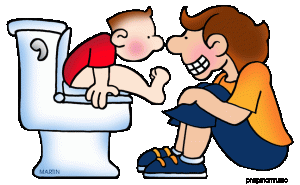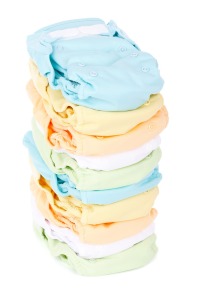In this last part we will look at some commonly asked questions about EC:
• Potty pauses
• EC when outside
• EC at night
• What are the advantages of EC
Read part one (what is EC) here and part two (how to do EC) here.
My journey with EC had lots of ups and downs. I used to get frustrated every once in a while, when I had days with lots of misses or baby was refusing to sit on the potty. I later read that potty refusals (called potty pauses) are actually quite common at certain ages.
Potty pauses are when a baby who was consistently going in the potty suddenly refuses to sit on the potty anymore. They usually happen when baby is working on new developmental skills, (like crawling and walking). Many babies between 9 and 14 months want to practice crawling, cruising and walking and will refuse to sit on the potty even though they were willing to sit before.
What can you do?
Know that this normal and expected. Try not to stress about the refusal to sit on the potty.
Keep offering the potty every once in a while. Many babies will consent to sit on the potty first thing in the morning and continue to poop in the potty as well.
If you are getting too stressed, back off for a day or two.
Keep baby in cloth diapers so that misses are easy to clean up. I never tried to go diaper free during potty pauses; it was too frustrating. It was much easier to just throw the diaper for a wash.
A change of scene helps.
Try a different bathroom (this worked very well for my second baby)
Try switching up between the floor potty and toilet seat reducer.
Read or sing to the baby or provide some special toys to play. (My mother used to play a game of “where is the wall”, “where is the door” with my kids to keep them happy).
Never force baby to sit on potty . If they are clearly unwilling to sit, just let them be.
Mostly, my two would be happy to sit after a couple of days.
What about EC when going out? I took my babies to the potty when out only after 18 months old. In India public toilets are quite dirty and I did not feel comfortable taking young babies.
I would always offer potty right before leaving and as soon as I got home.
Some people choose to carry small travel potties along with them. I never did because it was too much for me. I had enough stuff to carry anyway. It’s really up to you to decide what to do.
EC at night:
I (mostly) did not take my babies to pee at night till about 2 years old. I preferred to nurse to sleep before that. In case they were not settled by nursing, I would try the potty.
At about 2 years old, I took them potty right before bed time and again when I went to bed (they would pee when half asleep). That helped them remain dry at night.
Both my daughters were fairly consistently dry at night by2.5 years or so. They rarely woke to pee after 2.5 years old.
You can certainly take younger babies to pee at night as well, my two were quite unhappy to be taken therefore I never really pushed it. As always, follow your baby’s cues.
Advantages of EC:
Whatever your EC journey looks like, EC has certain advantages over conventional potty training.
The most important is that baby does not get diaper trained and then later have to unlearn everything. Conventional potty training often begins at age 2, the age when toddlers are at their most defiant. EC on the other hand is often ending by age 2 to 2.5 years. EC Babies and toddlers simply view the potty as a regular part of their day to day life, rather than a power struggle.
EC babies poop on the potty from early on.
EC is environment friendly, as poop goes in the potty and lesser diapers are used and washed.
EC babies need fewer diaper changes
EC babies seldom get diaper rash.
To sign off, I would like to talk about why EC works. There is not much research done on EC. Conventional potty training wisdom says that kids less than 18 to 24 months old do not understand the sensation of a full bladder or wanting to poop.
However, anecdotal data on EC seems to indicate otherwise. Many EC babies regularly communicate the need to go from very young ages. EC babies also seem to learn to control their bladders and bowels earlier. With so many advantages of EC, why not give it a try? I personally liked that there was one lesser power struggle with my 2 year olds!
Happy Potty (P)Oops Parenting!
Aparna
13/1/2015
References:
1. Duong TH1, Jansson UB, Holmdahl G, Sillén U, Hellström AL. Urinary bladder control during the first 3 years of life in healthy children in Vietnam–a comparison study with Swedish children. J Pediatr Urol. 2013
2. Duong TH1, Jansson UB, Hellström AL Vietnamese mothers’ experiences with potty training procedure for children from birth to 2 years of age. J Pediatr Urol. 2013 Dec
3. Rugolotto S1, Sun M, Boucke L, Calò DG, Tatò LToilet training started during the first year of life: a report on elimination signals, stool toileting refusal and completion age. Minerva Pediatr. 2008 Feb;60(1):27-35
4. Sun M1, Rugolotto S. Assisted infant toilet training in a Western family setting. J Dev Behav Pediatr. 2004 Apr;25(2):99-101.







